Opioid maintenance therapy is the term used to describe the ongoing use of an opioid-based medication as a treatment for people recovering from uncontrolled opioid addiction. While doctors often use a medication called methadone in this form of therapy, they can also use a generally safer medication called buprenorphine.
In a study published in October 2014 in the American Medical Association journal JAMA Internal Medicine, a team of American researchers assessed the potential role of opioid maintenance therapy in preventing the spread of hepatitis C infections among people who use injection drugs.
Opioid Maintenance Therapy
Opioid-based medications are commonly used to help people who enter treatment for an addiction to heroin, prescription opioids or other opioid substances. These medications are useful in two treatment contexts: opioid detoxification and opioid maintenance. During opioid detoxification, doctors temporarily use opioid-based medications to help people in treatment avoid the potentially severe, relapse-promoting effects of opioid withdrawal.
 During opioid maintenance, doctors use controlled doses of an opioid-based medication as a longer-term, safer alternative to the uncontrolled substance intake that characterizes opioid addiction. Some people receive opioid maintenance therapy for a few months, while others receive the therapy on an ongoing basis.
During opioid maintenance, doctors use controlled doses of an opioid-based medication as a longer-term, safer alternative to the uncontrolled substance intake that characterizes opioid addiction. Some people receive opioid maintenance therapy for a few months, while others receive the therapy on an ongoing basis.
The medication most associated with opioid maintenance therapy is methadone, a fairly powerful opioid substance only available in the U.S. in certain facilities licensed and monitored by the federal government. However, many programs now use buprenorphine, a weaker opioid substance legal for use in a much wider range of treatment settings.
Generally speaking, buprenorphine does not come with the same potential for abuse as methadone. In addition, while people who abuse methadone can easily experience an opioid overdose, buprenorphine overdoses are relatively rare. Also, people who abuse buprenorphine have much lower chances of developing medication dependence.
Hepatitis C
Hepatitis C is the name for a viral infection that produces significant and potentially dangerous inflammation inside the liver. The same name also applies to the virus (also known as HCV) responsible for causing this form of infection. Like all viral infections, hepatitis C is contagious. In America, people who use injection drugs are the most likely population group to experience exposure to HCV. Typically, such exposure occurs during the unsanitary use of needles and syringes or other types of paraphernalia associated with injecting drugs or medications into a vein, into a muscle or under the skin. Some people develop a limited form of hepatitis C known as acute hepatitis C.
However, others develop a much more serious, ongoing form of the infection known as chronic hepatitis C. People with the chronic form of the disease can experience severe or potentially fatal health issues that include permanent liver tissue scarring (i.e., liver cirrhosis) and certain types of malignant liver cancer. Unfortunately, most initially acute cases of hepatitis C turn chronic over time.
Can Opioid Maintenance Help Prevent Hepatitis C?
In the study published in JAMA Internal Medicine, researchers from Boston University, Boston Medical Center, the University of New Mexico and UC San Francisco used data gathered from a 13-year project to help determine if injection drug users who receive opioid maintenance therapy have a lowered chance of getting infected with the hepatitis C virus.
This project included 552 young adult users who were under the age of 30 and free from hepatitis C when their participation began. Some of these participants received opioid maintenance therapy as their primary form of treatment. Others received opioid detoxification or forms of drug treatment that did not involve opioid medications. In addition, some participants did not receive any drug treatment.
Over the course of the study period, 171 of the participants were infected with HCV. After analyzing the breakdown of affected individuals, the researchers concluded that the participants who received opioid maintenance therapy had a significantly smaller chance of getting hepatitis C than the participants who went through opioid detoxification or received a form of treatment not based on the use of an opioid medication.
The study’s authors concluded that members of the opioid maintenance therapy group had a lower rate of HCV infection because they had a lower rate of exposure to the risk factors that make such an infection more likely to occur. They believe that the use of opioid maintenance therapy may substantially limit the transmission of hepatitis C among young people who consume injection drugs.
Learn More About The Different Types of Addiction Treatment
Overdose deaths caused by heroin and other opioid drugs are on the rise across the U.S. Opioids include illegal heroin, but also many powerful and addictive prescription painkillers. All of these drugs are easy to abuse, get addicted to and overdose and die from using. An injection with a drug called Naloxone can reverse such an overdose and prevent a tragic death. If you have someone in your life addicted to or abusing opioids, you need to know about this life-saving overdose antidote.
When Naloxone Can Be Used
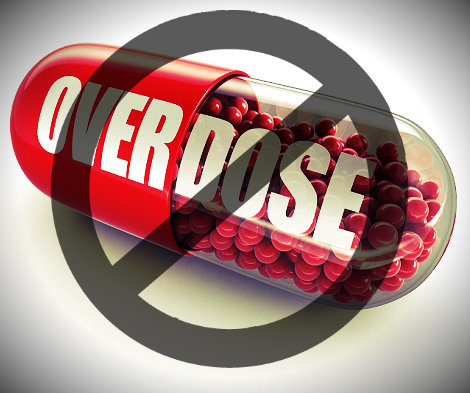 Naloxone is a drug that is related to opioids and that is capable of reversing the effects of certain opioids on the body. It can be used after surgery to reverse the effects of opioids given for pain and sedation. It can be given to infants born with a dependency on opioids. A mother’s drug use causes this and the Naloxone helps to relieve the infant’s withdrawal symptoms. For someone overdosing on an opioid, Naloxone can be injected with a needle or with an auto-injector, called Evzio. The auto-injector is similar to devices used for severe allergic reactions and can be used by anyone without medical training.
Naloxone is a drug that is related to opioids and that is capable of reversing the effects of certain opioids on the body. It can be used after surgery to reverse the effects of opioids given for pain and sedation. It can be given to infants born with a dependency on opioids. A mother’s drug use causes this and the Naloxone helps to relieve the infant’s withdrawal symptoms. For someone overdosing on an opioid, Naloxone can be injected with a needle or with an auto-injector, called Evzio. The auto-injector is similar to devices used for severe allergic reactions and can be used by anyone without medical training.
Naloxone Saves Lives
Naloxone has been successful in saving lives. The Centers for Disease Control and Prevention (CDC) reports that thousands of doses of Naloxone have been distributed in community groups dedicated to preventing overdose deaths. Because of this distribution, more than 10,000 people have been saved from life-threatening overdoses. Community groups, first responders and law enforcement officers are being given injectors in greater numbers to administer life-saving Naloxone.
Can Anyone Get Naloxone?
The important question for anyone who cares about an opioid drug abuser is about access to the overdose antidote. Emergency responders and police have them, and injection devices are easy to use. Can anyone get access to a Naloxone injector? Should you carry one with you to save your loved one’s life in the event of an unintentional overdose? Many advocates for greater access to the overdose antidote say yes.
Community programs are already working toward getting more Naloxone injectors into the hands of those who need it. It is a prescription medication, but it can be prescribed to anyone who is at risk of having an overdose. The reach of such community programs, however, is currently limited. These programs are run mostly through needle exchange programs and target inner-city heroin addicts. More access is needed in greater areas and for people abusing prescription painkillers, not just heroin. Support for expanding access is high, but funds are low.
To get a Naloxone injector for yourself or a loved one, you need to either find a community program near you that will distribute it to those in need, or find a physician willing to write you a prescription for one. If you don’t know where to start, speak to your primary care doctor for more information or referrals. Also keep an eye out for non-prescription Naloxone. Because of the great need for this life-saving drug, the Food and Drug Administration (FDA) is considering the development of an over-the-counter alternative.
Opioid addiction is a terrible disease. It can hook anyone and it can do so quickly. Getting over an addiction to an opioid is extremely challenging. Anyone abusing these drugs is at risk for an overdose. Dying from an overdose can even occur with the first use of one of these drugs. If you know someone who abuses any kind of opioid, the overdose antidote should be on your radar. Look into the possibility of getting access to the injector. It could save the life of someone you love.
Buprenorphine is a drug that can be used to treat opioid addiction. It comes in two formulations called Subutex and Suboxone. Although these medications are designed and prescribed to help people overcome addiction, some people abuse them to get high. If you love someone battling opioid addiction, pay close attention and make sure he is not abusing the medication that is supposed to be helping him heal.
What Is Buprenorphine?
Buprenorphine is a synthetic opioid drug that blocks withdrawal symptoms. When the addict takes it, he can stop using heroin or painkillers without experiencing the withdrawal that leads many addicts back to substance abuse. Subutex contains buprenorphine alone and is supposed to be used first and for a short period of time. Suboxone includes a second drug, naloxone, which is intended to prevent abuse. It blocks the high that buprenorphine can impart to the user and is designed to be used after Subutex.
Can Someone Abuse Buprenorphine?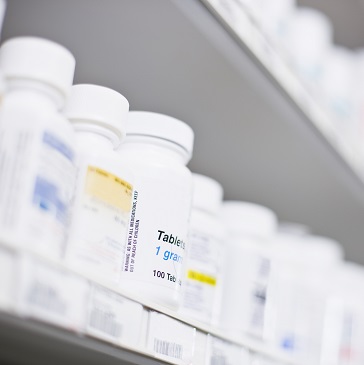
Buprenorphine was the first medication that the Food and Drug Administration allowed to be dispensed from doctors’ offices thanks to its successes in treating opioid addicts. Not all stories of buprenorphine use have been good, though. Some people have abused the medications, and although it is supposed to be impossible to overdose on, there have been deaths associated with Suboxone and Subutex abuse.
It is more difficult to get a high from buprenorphine, and also more difficult to overdose, than other opioids. It is possible, though, and some abusers are desperate enough to use this medication like an illegal drug. Dealers are making a killing selling black market buprenorphine, both to people wanting to abuse it and those wanting to use it as a treatment.
How Can I Tell Someone Is Abusing Buprenorphine?
It is important that you are vigilant with your loved one who has been prescribed buprenorphine. Not everyone realizes that there are risks associated with abusing it. Many are told that you can’t overdose on it, but this isn’t true. Make sure your loved one understands this risk and watch out for signs that he has started abusing his medication.
If you have lived with a drug addict you already know what many of the signs of abuse are. Maybe he has started:
- sleeping more
- missing days of work
- borrowing or stealing money
- having mood swings that seem inexplicable
Watch out for all the usual signs of drug abuse that you have seen before. If he starts acting like he used to when he was using, you should be concerned.
There are also specific symptoms associated with abusing buprenorphine medications. Side effects of the drugs that are possible include:
- flu-like symptoms
- sweating
- headaches
- mood swings
- nausea
- difficulty sleeping
Watch for indications that any of these are getting worse. If he is using more of the medication than directed, the side effects could be intensified. Other signs may include:
- hair loss
- emotional instability
- apathy
- a loss of interest in sex
- watery eyes
- muscle pains and cramping
- impaired memory
- depression or anxiety
Buprenorphine can be a powerful aid in helping opioid addicts get clean and stay clean, but there are risks that are often overlooked. As someone who loves an opioid addict, you should encourage him to use all the tools at hand to beat his addiction, including buprenorphine. But you should also be careful and look for signs that he has turned to his prescription medication for a high. If he has, confront him with love, understanding and patience, and help him to get back on the road to recovery.
If You Or Someone You Love Is Struggling With Addiction – Call Us Now – We Are Here For You 24/7
14 May 2014
The Changing Face Of Heroin Addiction
Heroin abuse, addiction, and overdoses have all been rising over the last decade. New users of heroin have risen from 90,000 to 156,000 per year. The use of other drugs in the U.S. has dropped over the same time period. In addition to the overall increase in use of heroin, demographics are also shifting. Once a drug concentrated in the inner cities, heroin has spread to the suburbs and to rural areas. Today a heroin addict could be anyone of any socioeconomic status, age or race.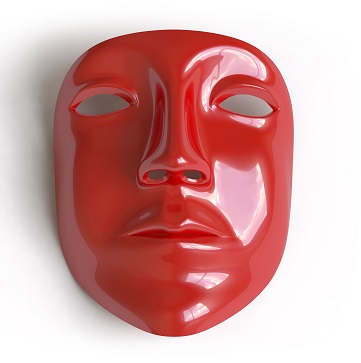
Who Is Using Heroin?
There was a time when you would be shocked to learn that an upstanding citizen and contributing member of society was hooked on heroin, but today the drug has infiltrated all areas of the country and all levels of society. According to one newsworthy profile, a woman who is a teacher and a mother living in Putman County, New York is also a heroin addict with track marks running down her arms. She admittedly came to work high on heroin and even used the drug in the staff bathroom during the day.
Another story tells the tale of a retired police captain moving his family from the city to the Chicago suburbs, hoping to distance his children from harmful influences. Instead of finding a more wholesome environment, his teenaged son was introduced to drugs and eventually overdosed and died from using heroin. He was not the only one among his teenage friends to meet that fate.
In Vermont, one of the most rural and sparsely populated states in the country, heroin use has reached epidemic proportions. The situation is so dire that the governor devoted an entire State of the State address this year to the issue of heroin abuse and overdose deaths. These are just a few of the stories demonstrating how the face of heroin addiction has changed over the last decade. You can no longer assume that all heroin addicts are inner city junkies. They are all around you.
What Accounts for the Rise in Heroin Abuse?
The shift in populations that use heroin and just how epidemic the problem is seem puzzling at first glance. There is a simple reason for the changes and it can be traced back to prescription painkillers. Narcotic painkillers are similar to heroin. They are both opioids, meaning they are derived from the opium poppy. They act in similar ways in the brain, produce the same kind of high and lead to the same devastating addiction.
For years, doctors have been prescribing narcotic painkillers in large amounts because they are good at what they are supposed to do: they control pain. The downside is that these medications are highly addictive and susceptible to abuse. With more prescriptions floating around and being passed and sold from one person to the next, many people became addicted. As the problem grew, doctors prescribed fewer narcotics and tighter restrictions were placed on these drugs. Those already hooked on them struggled to get the pills they needed.
Drug dealers had the answer for these narcotic addicts desperate for the next fix: cheap and available heroin. Heroin is now cheaper and easier to find than pain pills, so addicts naturally turned to this illegal drug to feed their habits. The drug cartels have seen an opportunity and have made sure to meet the demand with supplies of cheap heroin in cities, suburbs and rural states like Vermont. The face of heroin addiction has changed and unless steps are taken to treat these people and to prevent new addictions, the problem will continue to grow.
Read More About The Chronic Use Of Heroin Being On The Rise
09 May 2014
Overdose Fatalities On The Rise In New Jersey
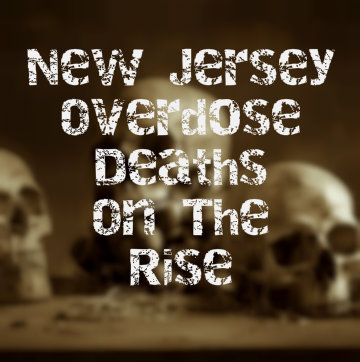 The National Safety Council (NSC) is a non-governmental, not-for-profit agency dedicated to promoting health and protecting life in the United States. The organization reports on and works to improve conditions in homes, at work and on the road. A recently published NSC report finds that drug and alcohol overdoses are the number one cause for accidental death in New Jersey – more than car accident fatalities.
The National Safety Council (NSC) is a non-governmental, not-for-profit agency dedicated to promoting health and protecting life in the United States. The organization reports on and works to improve conditions in homes, at work and on the road. A recently published NSC report finds that drug and alcohol overdoses are the number one cause for accidental death in New Jersey – more than car accident fatalities.
Like the rest of the nation, New Jersey recognized the wave of prescription drug abuse and responded strongly. State, along with federal officials, clamped down on access to prescription drugs. Making prescription drugs harder to get was seen as one way to reduce fatalities.
How Is The Problem Being Handled?
While efforts to place tighter controls has been effective to some extent, in another it may have only renamed the problem. Limited access has led to the street value of pills costing somewhere around $40 a piece, so many people simply switched to heroin, which is from the same family of drugs as prescription painkillers. It’s more powerful and less costly than it’s ever been, allowing drug abusers to switch to heroin when prescription pills are out of reach.
Substance abuse experts say that around 800,000 people in the Garden State have a drug or alcohol problem, yet just 10 percent ever ask for help. One clear way to bring down the number of accidental overdoses is to do a better job of convincing citizens to get help to break free of substance abuse.
The NSC says that the surge in overdose fatalities combined with the number of falls by senior citizens makes New Jersey homes the number one danger zone. New Jersey is not alone, however. Alcohol and drugs were reported as the leading cause of death in 20 states across the nation.
Buprenorphine is an opioid medication approved in the early 2000s as a treatment for people addicted to both legal and illegal opioid substances. This medication has a proven record of effectiveness, but current evidence indicates that doctors don’t often prescribe it to their opioid-affected patients. In a study published in March 2014 in the journal Substance Abuse, researchers from five U.S. institutions sought to determine how many people that use/abuse an IV (intravenous) opioid drug are aware of buprenorphine as a treatment option. These researchers also assessed IV opioid users’ willingness to participate in buprenorphine-based treatment.
What Is Buprenorphine?
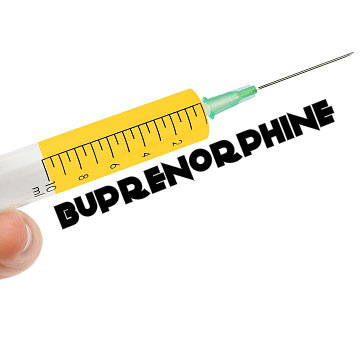 It might seem strange that a doctor would prescribe an opioid medication to help a person affected by opioid addiction; however, buprenorphine does not produce its effects as rapidly as heroin or other commonly abused opioids (or the opioid medication methadone); in addition, the medication has a relatively low maximum level of effect, and people who keep using it after reaching this level will not get any more “high.” In combination, these qualities make buprenorphine suitable as either a short-term or long-term option for people addicted to stronger opioids that enter treatment. Essentially, use of the medication makes it possible for recovering addicts to avoid uncontrolled substance intake while simultaneously avoiding the highly distressing symptoms of complete opioid withdrawal. One commonly used prescription product, called Subutex, contains only buprenorphine. Another commonly used product, called Suboxone, contains both buprenorphine and a second medication (naloxone) that effectively decreases the risks for buprenorphine abuse.
It might seem strange that a doctor would prescribe an opioid medication to help a person affected by opioid addiction; however, buprenorphine does not produce its effects as rapidly as heroin or other commonly abused opioids (or the opioid medication methadone); in addition, the medication has a relatively low maximum level of effect, and people who keep using it after reaching this level will not get any more “high.” In combination, these qualities make buprenorphine suitable as either a short-term or long-term option for people addicted to stronger opioids that enter treatment. Essentially, use of the medication makes it possible for recovering addicts to avoid uncontrolled substance intake while simultaneously avoiding the highly distressing symptoms of complete opioid withdrawal. One commonly used prescription product, called Subutex, contains only buprenorphine. Another commonly used product, called Suboxone, contains both buprenorphine and a second medication (naloxone) that effectively decreases the risks for buprenorphine abuse.
Effectiveness And Access Of Buprenorphine
Numerous studies have verified the effectiveness of buprenorphine and buprenorphine/naloxone as treatments for opioid addiction and opioid dependence (a state of physical reliance that does not include the dysfunctional symptoms of addiction). In addition, unlike methadone, which can only be administered to patients in a fairly small number of sanctioned clinics, any doctor who obtains a mandated ID number from the U.S. Drug Enforcement Agency can prescribe buprenorphine and buprenorphine/naloxone. This means that, theoretically, people affected by opioid addiction can get buprenorphine-based treatment in a far greater number of locations than they can gain access to methadone. Thousands of doctors across the U.S. have gone through the training needed to properly prescribe buprenorphine and buprenorphine/naloxone and have also registered with the DEA.
Awareness Among IV Opioid Users
In the study published in Substance Abuse, researchers from Johns Hopkins University, the City University of New York, the Albert Einstein College of Medicine, the Montefiore Medical Center and New York Harm Reduction Educators used an examination of 158 IV opioid users in New York City to assess how many such users know about buprenorphine as a treatment option for opioid addiction. All of these users were participants in a syringe exchange program. In addition to gauging basic awareness among these individuals, the researchers used interviews to determine how many people had received some form of buprenorphine and how many people displayed a willingness to try the medication or learn more about it. The researchers also looked for any connection between established familiarity with buprenorphine and the willingness to use the medication.
All told, the researchers found that most of the study participants (70 percent) had heard about buprenorphine as a possible treatment option. Roughly one-third of the participants (32 percent) had first-hand knowledge of someone who took buprenorphine, while another third (31 percent) had second-hand knowledge of someone who took the medication. Only 12 percent of all the individuals enrolled in the study had received buprenorphine themselves. When the researchers asked the 138 participants with no personal history of buprenorphine use if they were curious about using the medication, more than half of these individuals (57 percent) replied in the affirmative. Upon further investigation, the researchers concluded that curiosity about buprenorphine use was basically limited to those participants with second-hand knowledge of the medication.
The authors of the study published in Substance Abuse note that the opioid users enrolled in their project were among those that may be overlooked by programs offering treatment for opioid addiction. Even still, most of these individuals knew about the medication and many showed a willingness to learn more about it or possibly use it as a treatment option. The study’s authors believe that public health officials should explore the interest shown by those IV opioid users with second-hand knowledge of buprenorphine as a potential inroad for eventually making active treatment with the medication more widespread.
Read More About Successful Buprenorphine/Naloxone Treatment For Opioid Addiction
08 Apr 2014
Chronic Heroin Use Is On The Rise
Heroin is perhaps the most widely known opioid narcotic drug of abuse. In addition to opioid addiction, chronic users of this drug typically face a range of serious and potentially fatal health problems. In a report presented in March 2014 to the White House Office of National Drug Control Policy, a team of researchers from the RAND Corporation estimated how many people in the U.S. qualified as chronic heroin users in the years between 2000 and 2010. This report includes detailed information on the levels of drug intake found among chronic users.
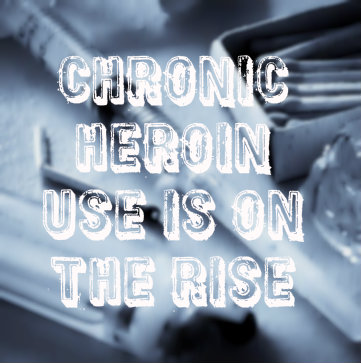 What Is Considered Chronic Use?
What Is Considered Chronic Use?
The federal Substance Abuse and Mental Health Services uses data from a yearly undertaking called the National Survey on Drug Use and Health to estimate how many Americans age 12 or older use heroin to any extent in the average month. The latest findings from this survey were released in the fall of 2013 and contain information compiled for most of 2012 and a short segment of 2011. According to these findings, roughly 335,000 adults and teenagers took heroin at least once in a representative 30-day timeframe. Altogether, about double that amount (669,000) took the drug at least once during the yearlong survey period. The figures for monthly heroin use were higher in 2012 than at any point since 2006. The figures for yearly use were higher in that year than for any year in the previous decade.
The Levels Of Chronic Heroin Use
Chronic drug use is a descriptive and useful but fairly imprecise term. Some chronic users may take a given drug four to 10 times a month, while others may have a more accelerated pattern of intake and take a drug 11 to 20 days per month. Still other chronic users may have heavily accelerated patterns of intake and take a given drug 21 days or more per month. As a rule, repeated use of an addictive substance is highly associated with chances for abusing that substance and developing the symptoms of drug addiction. For this reason, chronic users account for the vast majority of people directly affected by abuse- and addiction-related problems. Heroin is particularly noted for its potential to trigger abuse and addiction in repeated users. Users of the drug who develop these problems qualify for diagnosis of a condition officially known as opioid use disorder.
How Many Chronic Heroin Users Are There?
In the report presented to the White House Office of National Drug Control Policy, the RAND Corporation researchers calculated the number of chronic heroin users in the U.S. with information gathered from several highly regarded sources, including the federally sponsored National Survey on Drug Use and Health and Arrestee Drug Abuse Monitoring Program. This information covers the timeframe between the years 2000 and 2010. In 2010, the probable number of chronic heroin users hovered at about 1.5 million. Less likely numbers included a low estimate of 800,000 chronic users and a high estimate of 2.6 million chronic users. The number of chronic heroin users calculated by the RAND Corporation researchers is much higher than the total number of heroin users identified by the National Survey on Drug Use and Health. This is largely attributable to the researchers’ inclusion of information from the Arrestee Drug Abuse Monitoring Program, which covers a large pool of people (the arrested and the imprisoned) affected by an uncommonly high rate of substance use.
Roughly 300,000 of the individuals identified by the researchers as chronic heroin users took the drug four to 10 days per month. Another 200,000 identified individuals took the drug 11 to 20 days per month. Two-thirds (1 million) of those identified as chronic heroin users took the drug 21 days or more per month.
The authors of the report presented to the White House Office of National Drug Policy note that it’s fairly difficult to accurately estimate the number of people affected by chronic heroin use. This is due, in large part, to the problems involved in tracking the relatively small segment of the total population that takes the drug. On an important note, the data used by the report’s authors did not extend into 2011, 2012 and 2013. Figures from the National Survey on Drug Use point toward a sharp increase in overall heroin use during 2011 and 2012 (as of early 2014, figures for 2013 have not been released).
Find Out About Naloxone – A Potential Lifesaver For Heroin Addicts
Heroin use has exploded, a national survey on drug use reveals, growing from 373,000 yearly users in 2007 to an estimated 669,000 in 2012. This alarming substance abuse trend highlights the need for drug rehab and for strategies that reduce heroin’s harmful impact. One of those strategies is the distribution of a medication called naloxone, which reverses the effects of heroin overdose.
Naloxone, also known by the brand name Narcan, is a non-narcotic drug that works by binding certain opioid receptors in the brain. Approved by the FDA in 1971, naloxone reverses sedation and respiratory suppression, heroin’s primary life-threatening effects. It can be administered via an injection, usually given in the upper arm or thigh, or as a nasal spray. After it’s been administered, the medication takes effect as quickly as five minutes or less. Naloxone is considered safe and nontoxic, and it doesn’t produce a pleasurable high when used. This medication treats overdoses from heroin and other narcotic drugs, including codeine and oxycodone.
Administering naloxone is a harm-reduction technique, which means it’s not necessarily intended to stop heroin use. Instead, its purpose is to reduce the harmful and potentially lethal impact of a heroin overdose. While death is, of course, the most serious consequence of overdosing on opioids, brain injury from oxygen deprivation is a very serious concern as well.
Heroin users who overdose are at risk for long-term health issues, ranging from coordination problems to communication difficulties. In severe overdose cases, the result can be a vegetative state. Brain injury damages both the physical and emotional well-being of the addict, but it also negatively impacts the well-being of his or her loved ones. Treatment of an overdose-related brain injury is expensive as well. If the addict is unable to pay for needed medical care, the community will end up bearing the burden.
Who Can Give Naloxone?
Naloxone has been available for years to emergency medical technicians, ambulance crews and emergency room personnel. However, in recent years, perhaps fueled by the increase in heroin use, public health officials have pushed to make it more widely available to other first responders. For example, naloxone is now carried by police officers in several communities, including one in New Mexico and five in Massachusetts.
The challenge, however, is that heroin overdoses sometimes result in injury or death before first responders arrive or before the drug user reaches an emergency room. This has spurred some public health officials to advocate putting naloxone directly into the hands of addicts, their loved ones and concerned friends. In fact, in 2012, the American Medical Association (AMA) announced its support of offering naloxone through community-based programs. This would allow the bystanders of an overdose to administer the potentially life-saving medication. Some states have already moved to make naloxone more widely accessible. For example, Washington State allows drug users, family members and concerned friends to carry the medication.
What Are The Benefits Of Naloxone?
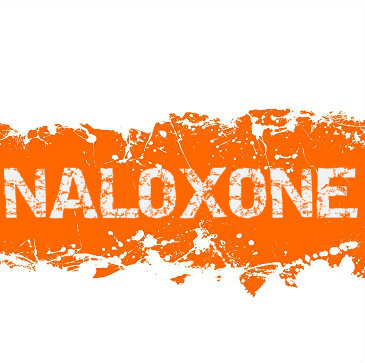 The potential benefits of naloxone are significant, and include the following:
The potential benefits of naloxone are significant, and include the following:
The drug saves lives. Research shows that using this medication reduces the number of deaths from opioid overdoses. A published study, which examined Massachusetts communities where first responders carried naloxone, reported 327 rescues from 2006 to 2009. The communities that had higher levels of training for naloxone use reported a nearly 50 percent reduction in opioid overdose fatalities. Those with lower levels of training had an approximate 30 percent lower death rate.
Naloxone is relatively inexpensive. A nasal spray naloxone kit costs in the ballpark of $25. This is extremely inexpensive when compared to the potential cost of brain damage or death due to a heroin-induced overdose.
It can be administered with minimal training. Naloxone, whether it is in injectable or nasal spray form, is easy to administer to someone who has overdosed on heroin or other narcotic drugs. Instructions are typically provided with the medication to help someone at the scene know when it’s time to give it and how to prepare the dose. For those who want to learn more about how to give naloxone properly, training is available through many community-based programs or from physicians familiar with the drug.
What Are The Downsides Of Naloxone?
Although the benefits of using Naloxone for opioid overdoses are impressive, use of the medication is not without its downsides. Negative aspects include the following:
The medication usually must be administered by someone else. By the time a heroin user needs naloxone, he or she is already likely unconscious. Naloxone is most effective when there’s a sober bystander able to watch for signs of overdose and administer the medication as quickly as possible. Unfortunately, many addicts use when they’re alone or with others who are also using. A sober bystander often isn’t anywhere in the vicinity. By the time someone does come onto the scene, it may be too late.
It doesn’t counteract the effect of other drugs. Naloxone only works for opioid overdoses, which means it has no impact when a person has ingested alcohol or substances like cocaine, benzodiazepines (such as Xanax or Valium), or methamphetamines.
Naloxone triggers withdrawal. Because the medication quickly reverses heroin’s effects, the user experiences withdrawal symptoms. These feelings are intense and uncomfortable; however, they’re not life-threatening. Perhaps the most dangerous aspect of withdrawal is that the heroin user will have a compelling urge to get high again.
The medication’s effects are temporary. Naloxone begins to wear off after 30 minutes, and most of it is gone after 90 minutes. However, a heroin high lasts from two hours in addicted users and up to six hours in new users. When the naloxone dose wears off, there may still be enough heroin in the body to reinitiate the high. If the original dose of heroin was large enough, respiratory suppression and sedation could start again. This would make an additional dose of naloxone necessary.
Bystanders may not call for help because they fear trouble with law enforcement. Loved ones or drug-using friends are sometimes highly reluctant to reach out to responders, even when those responders are armed with the potentially life-saving naloxone. This is often because they don’t want the person who’s using to get into legal trouble.
Some oppose its use. As with other harm-reduction strategies, such as needle exchange programs, there are always those who oppose its use. Critics charge that naloxone makes heroin users less likely to seek drug rehab because they no longer fear the consequences of an overdose.
Heroin abuse and addiction are serious community concerns. An overdose can lead to tragic and permanent consequences. While drug rehab treatment and abstinence are always the ultimate goals, it’s also important to address and reduce the harm done by drug abuse. Although it has its downsides, naloxone is a safe way to decrease the physical, emotional and financial impact of heroin overdose.
Read More About Successful Buprenorphine/Naloxone Treatment For Opioid Addiction


